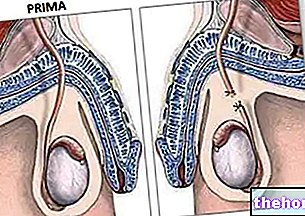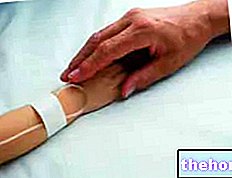Generality
Lung transplantation is an extremely innovative and useful therapeutic option to improve the quality of life of all those patients who suffer from various last stage (terminal) lung diseases, and who have no contraindications to such an important surgery.

Since 1983, when the first lung transplant was successfully performed, the number of operations internationally has increased dramatically. There are currently an estimated 2,000 pending lung transplants worldwide each year. Unfortunately, however, there is still an organ shortage, so much so that one in six patients on the waiting list dies before a donor organ is available. Therefore, strategies for increasing the number of donors are crucial. Long-term prognosis after lung transplantation is still not as good as for other transplant procedures, especially due to the countless complications that can arise. In addition to chronic infections, organ dysfunction is the leading cause of death and the most important factor. limiting in prognosis. Other problems that can arise are rejection, bronchial complications, and primary post-lung transplant dysfunction.
Index Article
Apply for Transplantation
In specialized centers, candidates for lung transplantation are chosen on the basis of specific disease factors, after the exclusion of any complications.
Lung transplantation is indicated for all those diseases at an advanced stage that no longer respond to therapy, and with a limited long-term prognosis: pulmonary emphysema, COPD (chronic obstructive pulmonary disease), pulmonary fibrosis, cystic fibrosis. The ideal candidates are people under the age of 60, in need of continuous oxygen therapy and who do not have significant comorbidities (presence of two or more diseases in the same individual). These candidates, moreover, to be ideal, should have a 5-year survival time, without transplant, less than 50%.
Currently, nearly all lungs useful for transplants are explanted from brain-dead donors who have intact pulmonary arterial circulation.
The survival rate after lung transplantation must be evaluated taking into consideration the type of underlying disease for which it is performed and the individual course. Lung transplantation does not usually cure the disease, but it allows you to limit its treatment.
Selection of recipients
Lung transplant candidates are first carefully screened to diagnose any comorbidities that could adversely affect the success of the transplant (Table 1). In patients over 50 years of age, some concomitant diseases are particularly relevant for transplantation, such as: cardiovascular problems, organ failure (especially kidney and liver) and tumors. This is mainly because, after a transplant, large quantities of anti-rejection drugs are administered. (which are immunosuppressants, that is, they depress the immune system): they, in a not perfectly healthy individual, can cause serious consequences and even lead to death. In younger patients, especially in those with cystic fibrosis, it is also important before the transplant , scrupulously search for a possible outbreak of infection, especially at the level of the teeth and paranasal sinuses, and treat it with antibiotics. You will be able to proceed with the surgery only after his total recovery. Furthermore, all those patients who have severe muscle loss due to weeks or months spent in bed or in a chair are not candidates for a lung transplant. wheels, or who can walk with only a few steps.Before considering them suitable for lung transplantation, an attempt should be made to improve muscle status.
An absolute contraindication to lung transplantation is represented by a malignant tumor in place. On the other hand, a subject who has had a malignant tumor in the past must not have relapses for a minimum of two years and, for breast and colorectal cancers, for at least 5 years. Finally, active smoking, drug addiction or alcohol addiction are also not acceptable in view of a lung transplant.
Other articles on "Lung Transplant"
- Lung transplantation: indications, surgical techniques and results
- Lung transplant - postoperative monitoring

.jpg)







.jpg)


















